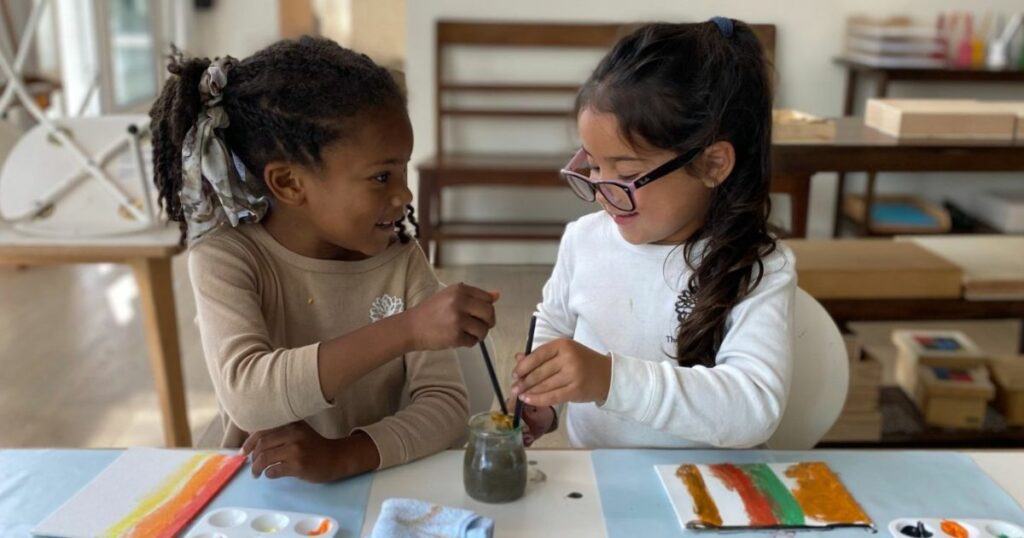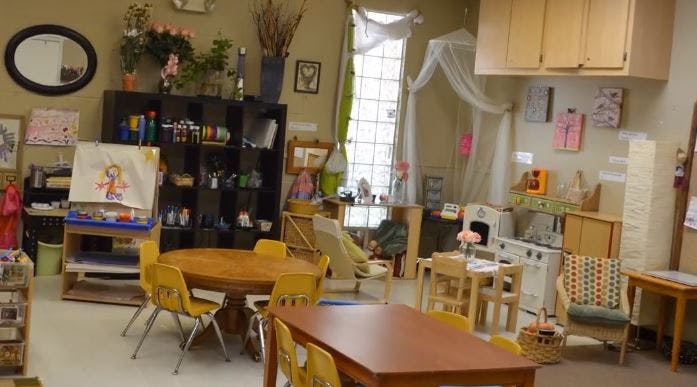Maria Montessori began working with children more than a century ago yet her life’s work and legacy have altered our knowledge of children and how they interact with the world around them. Dr. Montessori’s work is now carried on through accredited Montessori schools around the world, staffed by Montessori-certified educators known as ‘guides.’ They work to support the complete child, assisting children of all ages in becoming capable, independent, and collaborative learners. Her life’s work and philosophy help us realize how children are the key to a more peaceful world almost a century later. What makes Montessori education more essential than ever before?
Creative thinking and problem-solving:
Montessori created customized materials based on scientific observation to assist kids in learning key concepts such as addition in mathematics or linguistic patterns.
Children today learn abstract ideas and can solve issues with materials that stimulate self-correction in properly planned learning environments with the help of their guides.
They can achieve a deeper level of comprehension and approach the world with purposeful curiosity as a result of their research of concrete materials.
The Montessori curriculum promotes human connections, philanthropy, and a sense of interconnection and interdependence. The curriculum is implemented by the guides in addition to the material.
Children are inspired to study and explore the world and all of its people, starting with the big teachings, which serve as the foundation for all future learning. It fosters thankfulness and awe for all that humanity has found and created.
Time and space:
Montessori noticed that children required plenty of unstructured time to work with the materials. In today’s Montessori schools, this translates to a three-hour work cycle that allows children to ebb and flow through concentrated work.
During this time, the guide either delivers lessons to individuals or small groups of students or observes the children’s work, which is then used to develop lesson plans. In a Montessori classroom, formative assessment occurs daily.
Self-awareness and independence:
The prepared setting creates an environment in which children feel empowered to make decisions for themselves. All objects in the environment including furniture, bookshelves, cutlery, dishware, cleaning tools, and Montessori materials, are adapted to the child’s size.
The teacher is not the center of attention in the classroom; hence there is no focal point. Rather, as a community, the young children interact with the environment.
Unlike in a regular classroom, when the teacher gives a single lesson to the entire class, the teacher in a Montessori classroom tailors teachings to the specific requirements of each student.
It helps children in a Montessori classroom to improve in areas where they are weaker through targeted instruction while also allowing them to grow on their strengths. The students can work on any project they want, but the guide makes sure that there is an accomplishment of all of the curriculum or learning objectives.
Collaboration and knowledge transfer:
As an inherent part of the learning process, a Montessori classroom encourages more collaboration and social learning.
In a Montessori classroom, guides teach children how to govern their social interactions and let them experience an opportunity to negotiate, share, meditate, and compromise.
As a result, the classroom becomes self-regulating, with natural social conflicts addressed mostly by the children themselves, with the help of the Montessori guide.
The multi-age groupings spanning three years are another difference between a Montessori classroom and a typical classroom. This allows for possibilities for mentorship and leadership development.
Because of the mixed age group, younger children can look up to older classmates for guidance and inspiration.
Build a sense of organization and order in children:
In a Montessori classroom, every item on the shelves has been carefully considered and placed with purpose. From left to right and top to bottom, the difficulty level increases. Each curriculum area has its own set of shelves and is located in its section of the classroom. The teacher organizes required materials in baskets or trays. Also, everything a child needs to execute a task is available there.
A teacher’s movements and language are deliberate when she presents a lesson. She acts slowly and deliberately so that the youngster can follow along and repeat her activities if they select the same project again.
In a nutshell:
The Montessori method is one of the oldest progressive education approaches. It is based on the idea that children have a natural desire to learn. The distinctive curriculum, backed by didactic resources, distinguishes Montessori from other progressive pedagogies. Montessori teachers are educated to know the teachings that go along with each material and to lead the child through a carefully designed environment. Montessori education caters to a set of learning styles and encourages students to work at their speed. Within each section of the curriculum, children explore the classroom environment and develop their unique interests. In short, the Montessori education method lets children continue to flourish and make them reach their highest potential!






